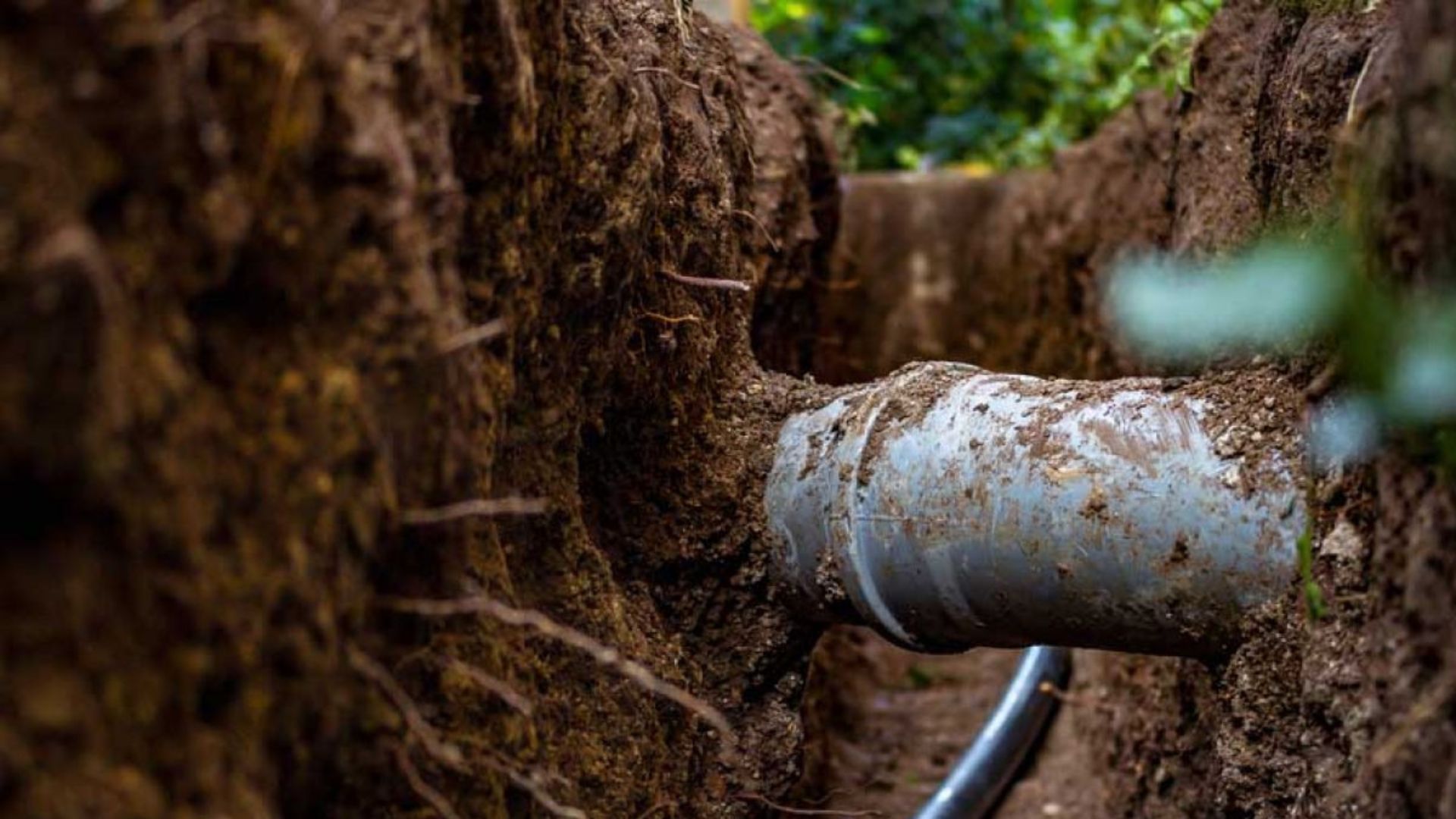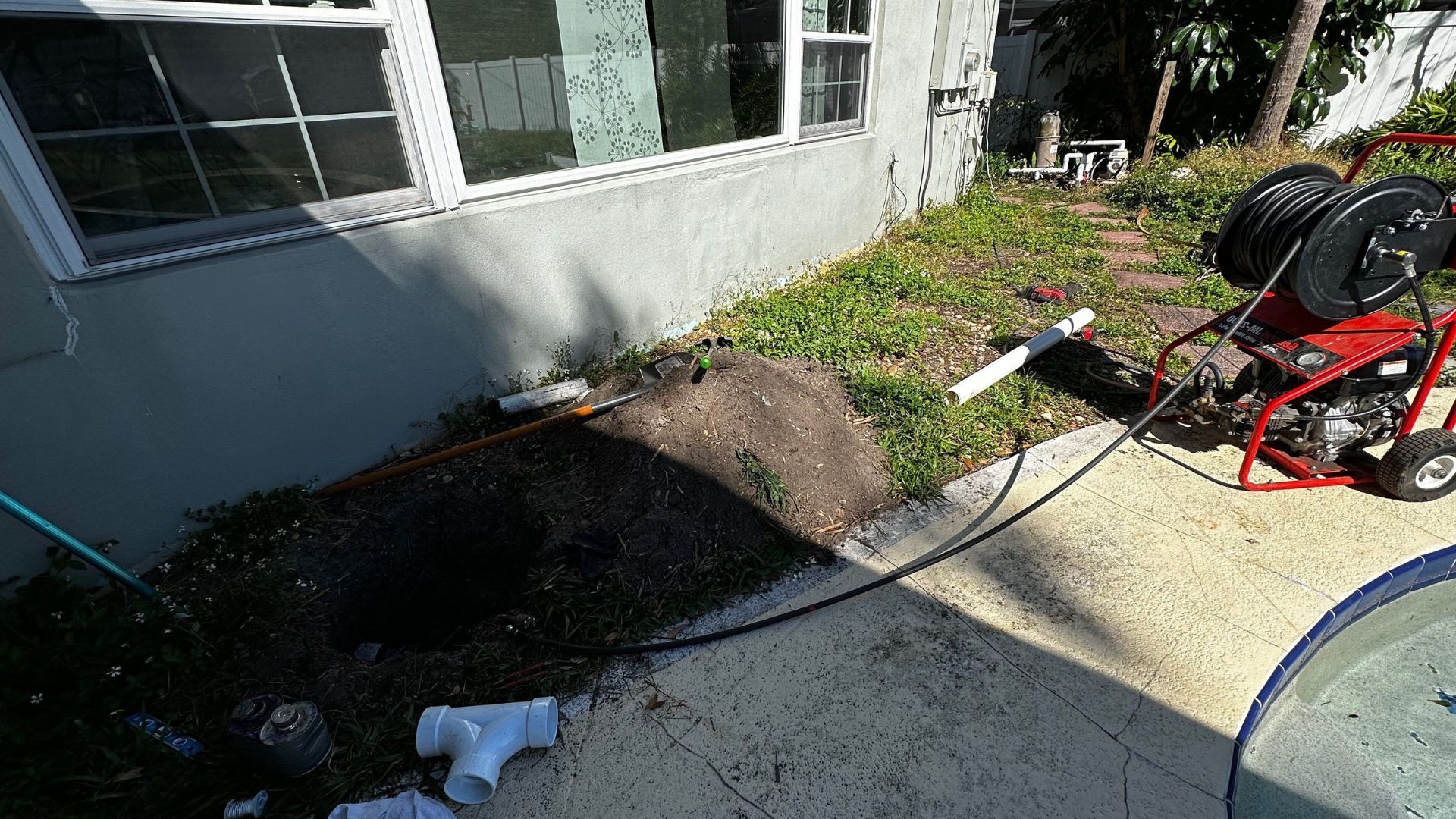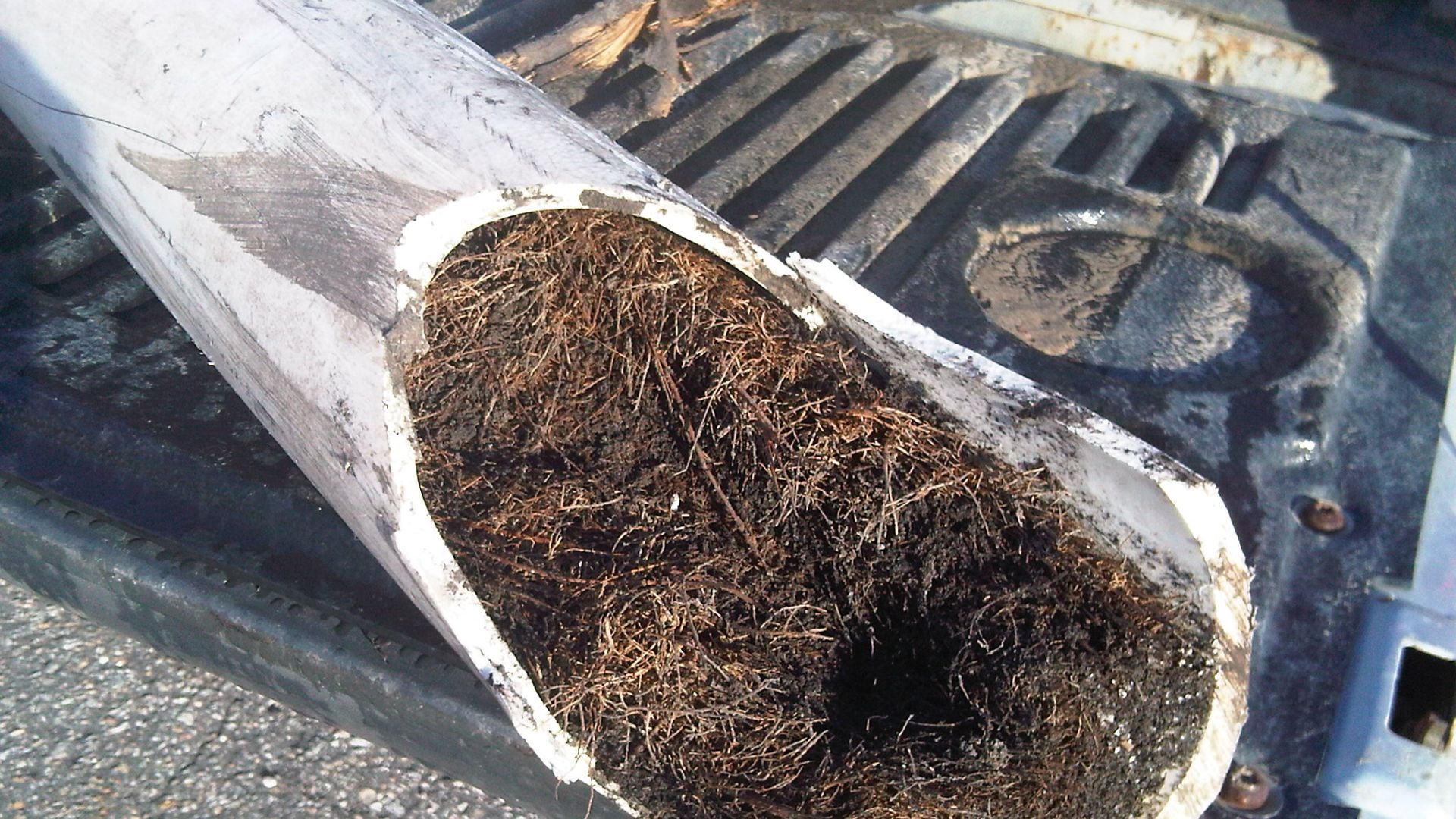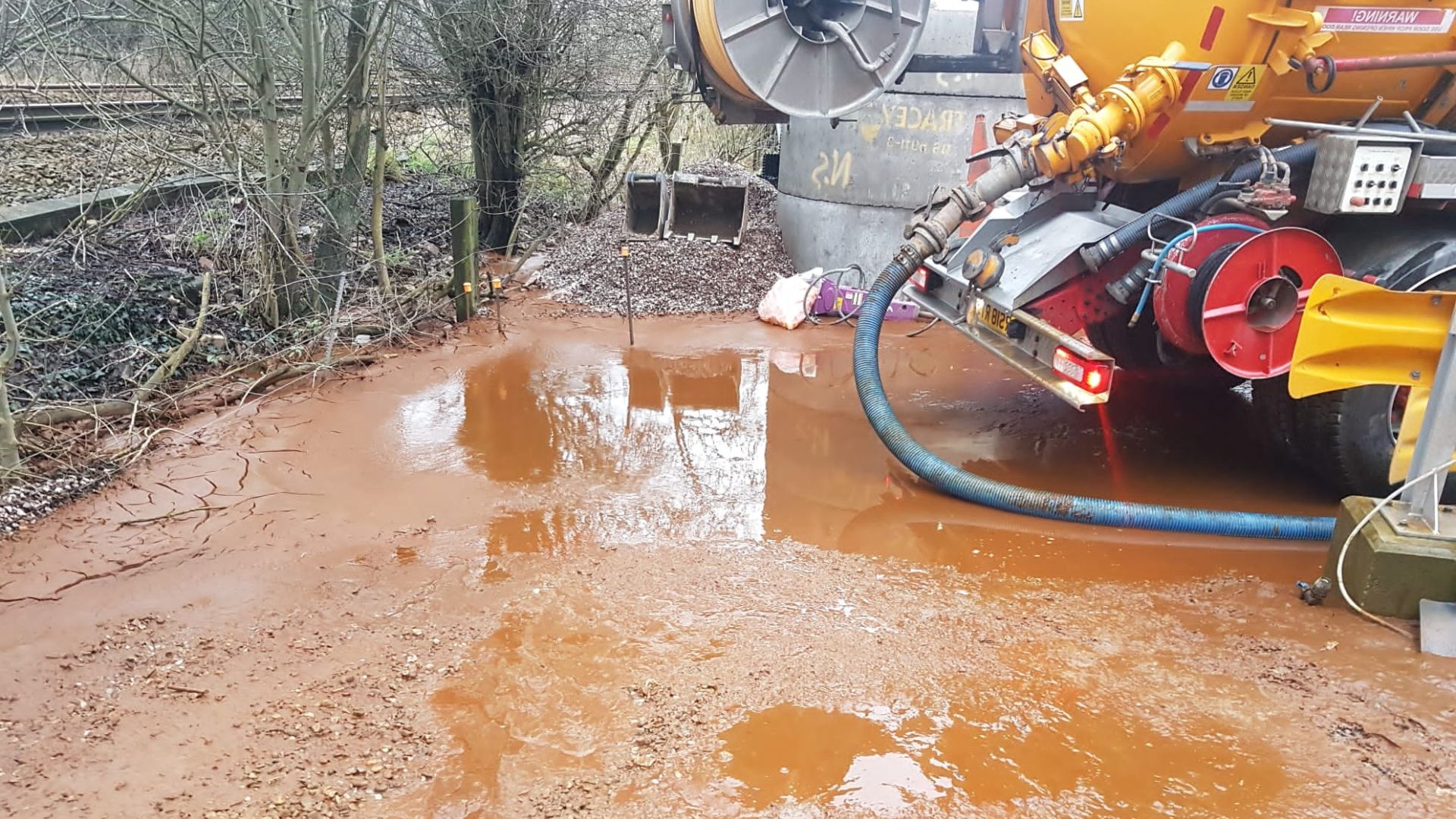Tree roots are responsible for most outdoor drain blockages in residential areas. Could that innocent gum tree in your yard be quietly cracking your drainage system? As they grow, roots seek out moisture, often finding it in cracked or ageing sewer pipes.

Once inside, this tree root intrusion expands and clogs the line, causing blocked drains and costly disruptions. Most homeowners have no idea there’s a problem until heavy rain brings flooding or worse.
Left unchecked, root intrusion can cause extensive damage. Professional intervention is often the only effective solution for properly removing tree roots.
How Tree Roots Cause Blocked Stormwater Drains
Most blocked drains don’t happen overnight. They usually start deep underground, where tree roots slowly make their way into your stormwater system.

1. Moisture Attracts the Root System
Old or poorly joined drain pipes often leak small amounts of water into the surrounding soil. This steady moisture draws in the nearby root system, which instinctively grows toward it in search of nutrients.
2. Root Invasion Through Cracks
Once contact is made, fine roots find their way through cracks or loose joints. What begins as a thin strand soon becomes a dense tangle. This root invasion leads to tree root blockages that clog the pipe and restrict water flow. Inside the drainage pipes, this growth builds pressure, displaces pipe sections, and eventually leads to complete failure.
3. Stormwater vs Sewer Pipes
Stormwater drains carry rainwater away from roofs and paved areas, while sewer pipes carry water from toilets, showers, and sinks. Blockages in either system can cause serious problems, but stormwater issues often go unnoticed for longer.
4. Early Warning Signs
Look out for pooling water in the yard, unpleasant smells from sewer drains, or slow runoff during rain. Visible root growth near outdoor grates is another sign your pipes could be under attack. Catching it early can prevent major repairs.
What Happens to Your Drainage System Over Time

When tree roots infiltrate your pipes, the damage builds slowly but steadily. It’s not just about blockages — the entire system can be affected over time.
1. Long-Term Impact on Pipes and Soil
- Repeated root intrusion weakens the structure of drainage pipes
- Cracks spread as tree roots expand inside the system
- Stormwater drains lose their ability to carry water away efficiently
- Pressure builds within the stormwater drainage systems, leading to bursts or collapses
2. Effects on the Surrounding Property
- Blocked sewer lines push water back into the system
- Excess moisture destabilises the surrounding soil
- Yard erosion becomes more noticeable after heavy rain
- Water pooling may affect nearby slabs and foundations
3. How to Help Prevent Damage
- Kill roots early using approved treatment methods
- Don’t plant trees directly above drainage lines
- Choose non-aggressive root systems when landscaping
- Monitor existing trees growing near pipes
- Act if you suspect tree roots near stormwater drains
Tell-tale Signs of Root Damage in Drain Pipes
Root blockages often give off early clues before major issues appear. Paying attention to small changes can save thousands in repairs.
1. Common Warning Signs
- Gurgling sounds from outdoor drains during rainfall
- Overflowing grates or puddles that don’t drain away
- Odd smells around the yard, especially near the garden
- Damp patches or consistently wet soil
- Cracks or lifting in concrete and paved areas
- Slow runoff is affecting the drainage system
2. What Else to Look Out For
- Surrounding plants are growing faster than expected due to leaking underground pipes
- Damage near the main sewer line from all the roots pushing through
- Broken pipes close to an offending tree or fast-spreading roots
- Slow-growing trees are planted too close without proper planning
- A lack of root barriers around older pipe installations
Early detection and fast action can prevent bigger problems later. If these signs appear, it’s time to investigate before the damage spreads.
How to Clear Tree Roots from Drainage Pipes
If mature trees are planted near old or cracked pipes, it’s only a matter of time before roots find their way in. Clearing them properly depends on knowing the extent of the damage.

1. Start with a Camera Inspection
Before anything else, a professional plumber should carry out a camera inspection through the sewer cleanout pipe. This reveals how badly the pipe system is affected and where the root masses are located.
2. Mechanical Cutting Tools
Tools like a root cutter or root saws are used to physically cut and remove roots from inside clay pipes or other older materials. These can quickly clear tree roots, but the damage often returns if the crack remains open.
Pros:
- Immediate relief from blockage
- Works well on accessible root clusters
Cons:
- Can miss finer roots
- Risk of further pipe damage in fragile sections
3. Hydro Jetting
Hydro jetting uses high-pressure water to blast away invasive root systems without damaging the pipe. It’s especially effective for stubborn clogs.
Pros:
- Thorough cleaning of the full pipe interior
- Safe for most materials
Cons:
- Doesn’t stop regrowth
- Not ideal for already broken pipes
4. Chemical Root Removal
Options like copper sulphate, rock salt or foam-based treatments can kill roots inside pipes. These are often followed up with pipe relining techniques to stop future intrusion.
5. Pipe Relining
A damaged pipe can be sealed using an epoxy resin-filled liner. This method is part of modern pipe relining and works well after roots are cleared.
Pipe Relining and Repair Options
Once the roots are gone, the next step is to fix the damage left behind. Pipe relining is one of the most effective trenchless repair options available today.
What Is Pipe Relining
Pipe relining involves inserting a resin-coated liner into the existing pipe. It hardens in place, forming a new pipe inside the old one without digging up the yard. This method works well after clearing roots and repairing internal damage like minor cracks.
Why It’s a Practical Option
Pipe relining is quicker, less invasive, and more cost-effective than full excavation. There’s no need to dig up driveways, lawns, or paths, making it ideal for homes where access is limited or preserving landscaping is a priority.
When It’s the Right Choice
Relining is best for pipes with minor cracks or where draining slower is the main issue. Full pipe replacement may be the better option if there’s structural damage or collapsed sections.
Trust the Professionals
A professional plumber will assess the full extent of damage and recommend the right solution. Sealing all joints and cracks with relining also helps deter future root intrusion into these essential elements of your plumbing.
What to Avoid Planting Near Stormwater Pipes

Plant choices can have a major impact on underground pipes. Knowing what to avoid makes a big difference in protecting your plumbing systems.
Invasive Trees to Keep Away
Certain species are known to cause slow drainage and even long-term property damage. Avoid planting these near your stormwater or sewer system:
- Willows
- Figs
- Camphor laurel
- Poplars
- Rubber trees
Their roots aggressively seek moisture and often break into pipes looking for it.
Safer Options for Landscaping
Look for trees and shrubs with low-impact roots such as crepe myrtle, lilly pilly or dwarf citrus. These are less likely to interfere with plumbing systems.
Plan Ahead Before You Plant
Confirm the location of all drainage and sewer system lines before starting any garden work. Where planting near pipes is unavoidable, install root barriers as a precaution. Regular maintenance and the occasional treatment with copper sulphate crystals can also help reduce future issues with root growth.
Why DIY Fixes Usually Fail
It’s tempting to reach for a quick fix when drains start backing up, but most store-bought drain cleaners won’t stop root intrusion. These products may clear some surface build-up but don’t reach the deeper sections where tree roots are actively growing. In many cases, they do more harm than good.
Chemical cleaners can corrode pipes over time, especially in older plumbing systems, and may also cause environmental damage when flushed into the soil. Homeowners trying to handle the issue themselves often miss the bigger picture. It’s easy to overlook cracked sections or areas where the damage runs deeper than expected without a proper camera inspection.
DIY methods rarely address the root cause and can make things worse. Calling in a professional service ensures the right tools, experience, and inspection equipment are used from the start. This saves time, avoids repeat problems, and protects your pipe system from further damage.
Protecting Your Property’s Future Drainage Health
Staying ahead of drainage issues saves time and prevents costly repairs. A few simple habits can help keep your system running smoothly.
1. Inspect Regularly
Book professional drain inspectionsevery one to two years. These checks help spot early signs of damage before it becomes serious.
2. Keep Pipes Clean
Schedule hydro jetting as part of routine care. It clears out sediment, tree roots and other build-up that could lead to blockages.
3. Keep Everyone Informed
Make sure tenants or family members know what to look out for. Gurgling drains, slow water flow, and bad smells can be early warning signs.
4. Know What’s Below
Mapping out your underground services helps avoid accidental damage during landscaping or construction. It also makes future repairs faster and easier.
5. Stay Storm Ready
Stormwater systems should be maintained year-round, especially before the wet season. Keeping them clear prevents water build-up and pressure in the pipe system.
Don’t Let Tree Roots Wreck Your Drains Any Longer
Delaying action can lead to costly structural damage, flooded yards and ruined landscaping. What starts as a small issue underground often grows into a major headache. Big Blue Plumbing has the tools and expertise to clear stormwater pipes, remove invasive tree roots and restore your drainage system the right way.
Don’t wait for the next downpour to find out something’s wrong. Contact Big Blue Plumbing today for a fast inspection and a tailored plan that suits your property.
We’ve seen it all and fixed it all—no roots too tricky, no pipe too far gone.



